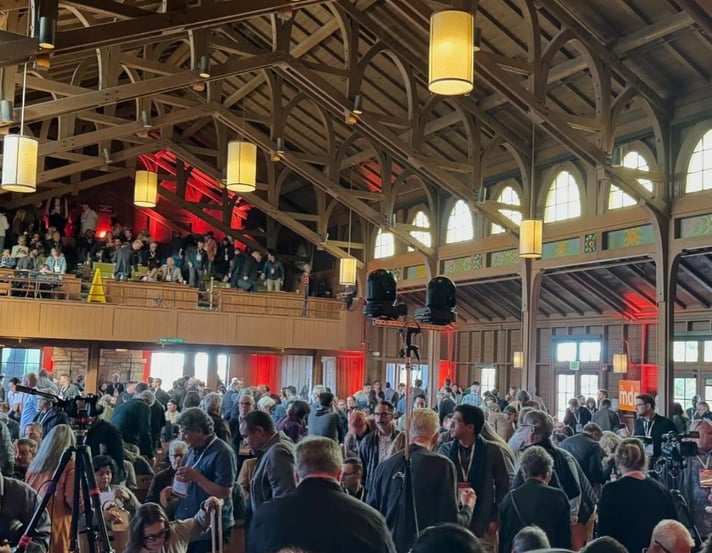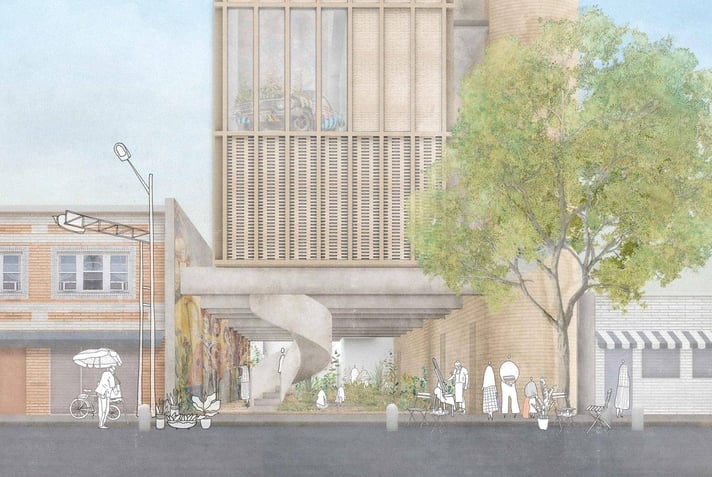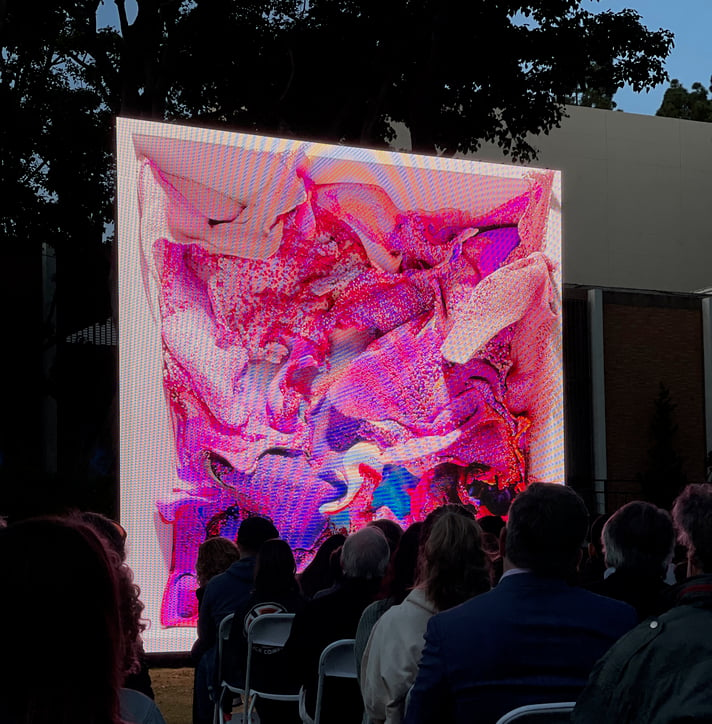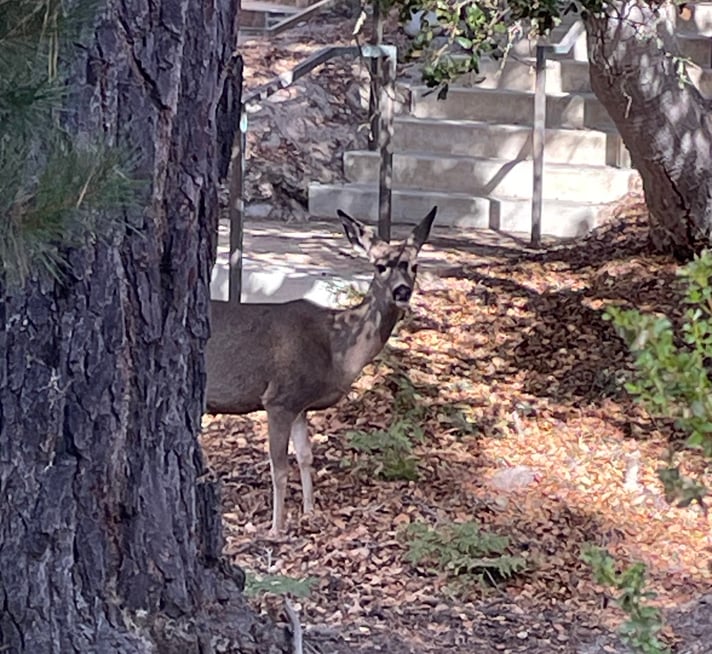|
|
|
|
|
|
|
|
|
Dear DnA Readers,
I hope you’re doing well, especially in these final days of the nail-biting election and World Series!
I was extremely lucky this weekend to have a chance to retreat from all the political noise and spend three days hearing from inspiring designers at the Monterey Design Conference.
MDC takes place at the Asilomar Conference Grounds on the sand dunes of the Monterey Peninsular. Since expanded and now a California State Park, the original buildings were designed early last century by Julia Morgan in the Arts & Crafts style for the Young Women's Christian Association (YWCA). She built halls and lodgings of fragrant redwood and granite stones, carefully wrapping them around existing trees.
This is one of the few conventions I’ve attended that takes place not in the climate-controlled, fluorescent-lit, characterless halls of a vast convention center but rather in a location that plays right into the themes under discussion at MDC: sensitivity to place, love of craft and materials, consideration for the climate, biodiversity, and human wellbeing.
 Inside Merrill Hall, at Asilomar Conference; image courtesy Monterey Design Conference Inside Merrill Hall, at Asilomar Conference; image courtesy Monterey Design Conference
Sharing their concepts was a line-up of talents, including the electrifying Tatiana Bilbao. The Mexico City-based architect introduced her work with provocations, whether questioning the meaning of “living” and why to challenge the conventional programming of rooms in a house, to arguing that housing as a human right is impossible to achieve within the free market.
She took on aquariums, arguing that they symbolize "our human belief that we can dominate and control the world through technology," and recounted how she reconciled herself with the commission to build one, by basing the design on a “narrative” — about the discovery in 2289 of a building from 2023 that had fallen into ruin and been flooded with seawater and aquatic life. "When we arrived at this ruin from the future, we carved paths, created staircases, and opened possibilities to encounter a world that had taken over the space." Her bold Sea of Cortez Research Center, in monumental raw concrete, appearing to emerge from the sea, is the result.
Bilbao has a project in the pipeline for Los Angeles: a complex that combines a Chicano art museum and affordable housing in Boyle Heights. The ten-story residential building, approved under ED1, the directive aimed at fast-tracking affordable housing, is her first for a cluster of sites owned by the land-use lawyer Alfred Fraijo, Jr.. (At a Monday night talk hosted by L.A. Forum, the two explained their goals of developing the Boyle Heights neighborhood in a manner that benefits and keeps in place the current residents.)
 A proposed art museum for Boyle Heights. Image courtesy Tatiana Bilbao ESTUDIO A proposed art museum for Boyle Heights. Image courtesy Tatiana Bilbao ESTUDIO
The Monterey conference also took on the onslaught of technology, in the form of speaker Refik Anadol, possibly the world's sunniest proponent of AI.
The media artist, UCLA professor, and pioneer in the aesthetics of machine intelligence walked the audience through artworks made of data, which he gathers in vast quantities and somehow repurposes as swirling, tumbling, shape and color-shifting images, projected onto the outside of buildings or seemingly set within gigantic frames as seen, below, in Moment of Reflection, shown at UCLA in 2022 to contemplate the impact of COVID-19. It was made "by feeding machine-learning algorithms a dataset of more than 300 million images of nature."
 Moment of Reflection, by Refik Anadol, UCLA, 2022. Photo by Frances Anderton. Moment of Reflection, by Refik Anadol, UCLA, 2022. Photo by Frances Anderton.
Anadol brims with enthusiasm about AI’s health-giving benefits, both through medical advances and through the power of art, and he spent no time at the conference on its negative implications: the nuclear power stations now being revived to power data centers, the jobs at risk, the questions of copyright, and more.
He showed his next big project DATALAND, the “world’s first Museum of AI Arts and digital ecosystem dedicated to data visualization and AI-based creativity,” which is to open next year at The Grand LA, the hotel, apartments, and mall designed by Frank Gehry, opposite WDCH. See it transformed by Anadol into hallucinatory "living architecture" in photo top of page.
Even though it is unclear what the connection is between the crunched data and the abstract patterns that emerge, Anadol's "machines dreaming" imagery is dazzling, and draining! It was a relief to take refuge from the kinetic screen and step into the woods for a peaceful walk alongside the deer and birds with evocative names like the Chestnut-backed Chickadee, the White-crowned Sparrow, and Dark-eyed Junco.
 Deers are unphased by human presence at Asilomar. Photo by Robin Bennett Stein Deers are unphased by human presence at Asilomar. Photo by Robin Bennett Stein
Then it was all over, and I got back to LA, woke up early Monday to get back to work at the computer and found… nothing. The Modem had died while I was away. Unfortunately, this was no longer the time for silence and contemplation. I need to do some fast research. Thankfully the machine was soon back in action, and Google AI was there to help.
|
|
|
|
|
|
|
|
|
|
|
|
|
|
|
|
|
|
|
|
|
|
|
|
|
|
|
|